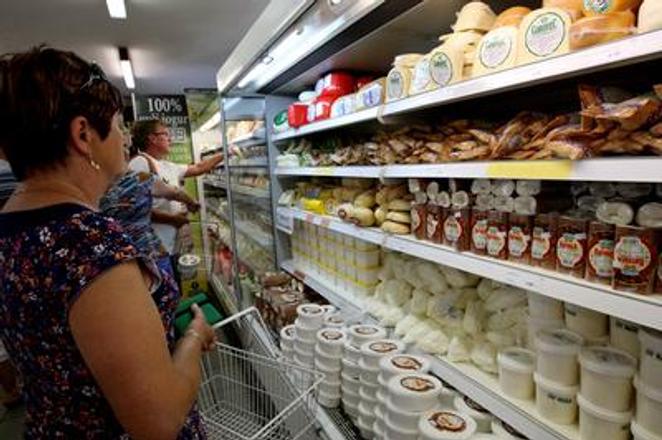SLOVAKIA’S economy continues to grow, propelled by rising domestic demand. Strong figures in construction and increasing bank loans also indicate strong growth in investments.
“We expect that domestic demand – consumption of households and especially investments supported by a better situation on the labour market and influence of EU funds has remained to be the driving force of economic growth,” Katarína Muchová, analyst at Slovenská Sporiteľňa wrote in her memo, adding that the revival of foreign trade was more vacillating than during the first quarter of 2015 and thus they do not expect a significant influence of foreign trade on economic growth.
The gross domestic product grew 3.2 percent in fixed prices during the second quarter of 2015 year on year, 0.1 percentage point more than during the first quarter of 2015, based on data of the flash estimate of the Slovak Statistics Office published on August 14. When seasonal influences are taken into consideration, the year-on-year growth stood at 3.1 percent during the second quarter, while when compared with the first quarter, the economy grew at the same pace, up 0.8 percent. Slovakia generated gross domestic product of €19.312 billion in current prices, up 3 percent compared with the second quarter of 2014. The Statistics Office will release a detailed structure of development of the GDP on September 4.
The last time Slovakia’s economy registered such a robust growth of 3.2 percent was during the final quarter of 2011, while the growth registered during the second quarter of 2015 exceeded expectations of analysts as well as market expectations of 3 percent y-o-y, Muchová wrote.
According to Stanislav Pánis, analyst with J&T, the revival of the growth of retail sales on top of an increase of consumer goods indicates an increase of consumption of households.
“The growth of employment, low inflation and growing real disposable incomes help households too,” Pánis wrote in his memo, adding that softer loans have helped as well.
Ľubomír Koršňák, analyst with UniCredit Bank Czech Republic and Slovakia, pointed out that strong numbers, but also a view on growing bank loans provided to non-financial companies especially indicate a strong growth in investments that continue to be strongly supported by public investments.
Employment
“Equally to previous quarters, the growth of the economy was accompanied by a relatively dynamic growth of employment,” Koršňák wrote in his memo.
In line with expectations, employment grew 2 percent during the second quarter of 2015 y-o-y. This represents a moderate acceleration from 1.8 percent during the first quarter of 2015, according to Muchová.
Koršňák added that growth in labour productivity, that was the main source of economic growth before the crisis, remains rather dampened.
“Thus we assumed that also during the second quarter we would witness a phenomenon, that was rather scarce in the past, and that is that wages increase faster than the labour productivity,” wrote Koršňák.
Neighbours and the EU
Countries that are Slovakia’s biggest economic partners reported mostly positive news. The Czech GDP grew by as much as 4.4 percent y-o-y and thus exceeded the market estimate of 3.4 percent. On the other hand, data from Hungary was disappointing with reported growth of 2.7 percent lagging behind an estimated 3.2 percent y-o-y.
Germany’s GDP grew 1.6 percent y-o-y and 0.4 percent month on month and thus its growth accelerated from 1.2 percent y-o-y and 0.3 percent month to month during the first quarter of 2015, according to Muchová. However, Koršňák pointed out that the German economic growth was a bit of a disappointment when it lagged behind more optimistic expectations of the market. But figures of the second biggest economy of the EU, France, have brought an even bigger disappointment when its economy stagnated regarding month to month comparison during the April-June period. On the other hand, the Greek economy was of a positive surprise, when, despite its problems with payments of its debt, managed to revive growth, Koršňák pointed out.
Outlooks
Slovenská Sporiteľňa keeps its outlook for economic growth for all of 2015 unchanged at 3 percent. It expects that the domestic demand will remain the main driving force of economic growth, while foreign trade should also contribute as it started to revive this year also thanks to a better economic situation in the eurozone.
UniCredit Bank Czech Republic and Slovakia is a bit more optimistic, keeping its so-far expectations of 3.2 percent. Apart from domestic demand, Koršňák expects that the relaxed monetary policy of the European Central Bank will massively support the economy of Slovakia along with the other economies of the eurozone. Risks for Slovakia’s economic growth are coming especially from the external environment, for example in the shape of turbulence accompanying Greek debt.



 Shops will close on August 29 and September 1 in Slovakia. (source: Sme)
Shops will close on August 29 and September 1 in Slovakia. (source: Sme)